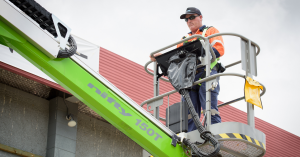How to stay vigilant in the workplace
Complacency can show up as a feeling of comfort and security that eventually leads to a lack of awareness of your surroundings. Whilst it’s obviously a positive thing to feel safe, comfortable and secure at work, when the scales tip too far towards feeling comfortable, it can be easy to let your guard down, lose focus and forget to check for hazards.
And, depending on the type of work you do, this can have anything from a minimal effect right through to catastrophic results.
What are the risks of complacency in high-risk work?
Working in high risk industries such as construction, infrastructure, utilities and mining carries near-constant safety risks, and workers need to be continually aware of their surroundings, actions and processes.
While no one intentionally plans to become complacent, we all have to be on the lookout for it, and being an engaged worker can help. Safe, engaged employees often carry out their work with a strong focus on their surroundings. On the other hand, workers who have become complacent are easily distracted, and can appear to be working on autopilot without actively thinking about the task at hand.
A loss of focus on work can have serious consequences, for example if a worker forgets to properly power off equipment, or neglects to replace a guard around a pit after working on it.
This false sense of security can increase the potential for serious injuries, and both early career workers and highly experienced staff can be at risk of becoming complacent.
How to stay vigilant and keep you and your workmates safe
Complacency happens gradually when a sense of urgency or risk gradually fades away due to familiarity and repetition.
Our brains naturally default to using the least possible effort to carry out a task, so when you’ve performed a task 100 times your biology can begin to work against you, dampening your awareness of the fine details of what you’re doing.
So how can you overcome this tendency to find the ‘path of least resistance’ when you approach a task?
Spot the signs of complacency in your own work
- Lack of motivation at work
- Missing vital steps in work processes
- Frequent near-misses or safety incidents
- Being easily distracted or finding it hard to stay focussed
Sometimes it can be hard to spot these signs in yourself, so it’s important to keep an eye on your workmates too. A positive work environment is one where everyone keeps the lines of communication and talks about the risks of complacency.
Tips to combat complacency on site
- Keep safety front of mind: toolbox talks, safety walks, and regular check-ins with staff can help ensure safe work practices are kept front of mind.
- Set both short and long-term safety goals to keep your team focused. Regularly monitor and track your progress towards goals to give your team a feeling of accomplishment. And once your goals have been met, new goals need to be set and regularly re-evaluated.
- Curiosity and new challenges prevent us from becoming stagnant and fixed in our thoughts – look at building challenges and learning opportunities into regular day-to-day work and encourage your team to learn new things. Disconnecting from the usual routines and habits – even just for a short time – can provide a good circuit breaker to get your team back on track and ensure safety is at the forefront of everyone’s mind.
- Pay attention to training requirements: being trained on a particular skill or competency is a key part of many construction, infrastructure, utilities and mining roles. However, over time, finer details can be forgotten, and skills can become less sharp, so undertaking refresher training courses in specific areas can be an effective way to combat complacency. With high-risk work, it’s often useful to simply undertake the full high risk work training again: most courses can be completed in a few days and the positive results of this short but effective training will quickly work to counter complacency in your workplace.
- Allowing employees the opportunity to upskill, broaden their knowledge or take on more responsibility can be a powerful driver that keeps staff engaged and focused at work. Supporting employees who show interest in learning new skills can also have good returns for employers, who gain a better-equipped workforce and the ability to undertake more complex and lucrative projects.
Keep your skills and knowledge up to date
If you feel that you or your team have lost your ‘edge’ when it comes to your safety knowledge and skills, it’s simple to get back on track.
Developing and strengthening existing knowledge with short courses in safety, high risk work licences or EWP skills can help you reset and reframe your approach to safety on site.
Even when you already have some knowledge or have completed training on a particular topic, it’s worth periodically undertaking the training again as a way to refocus your skills. You can also work with a registered training provider to make sure your team is competent and confident in carrying out their work safely.
For information on how Gladstone Training Services can help your business, get in touch with our friendly team.




